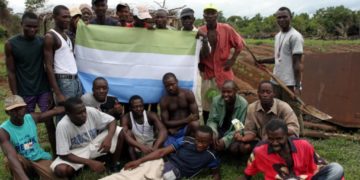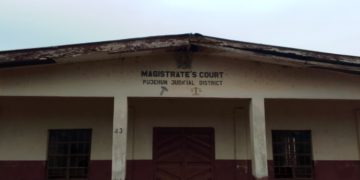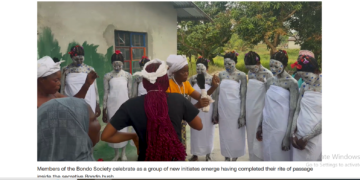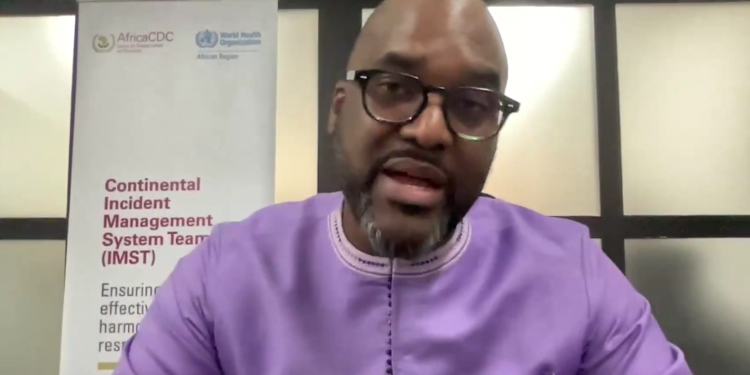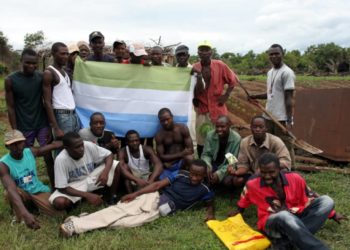By Kemo Cham
The Africa Centers for Diseases Control and Prevention (Africa CDC) is ramping up its assistance to Sierra Leone as it fights to break the chain of transmission of the Mpox virus.
Africa CDC is expected to approve a request from Sierra Leone for additional doses of vaccines. The continental public health agency is also deploying a group of experts from its Incident Management Support Team (IMST) to help boost the country’s response to the ravaging epidemic that has placed it at the top of countries actively transmitting the virus.
Data shared by Africa CDC on Thursday reveals that Sierra Leone continues to lead the upward Mpox transmission on the continent, accounting for 61 percent of cases the previous week. On the same day, the country recorded 56 new confirmed cases, bringing to 2,921 the cumulative confirmed.
Sierra Leone was initially allocated 63, 000 doses of the Mpox vaccine based on its initial plan, and 61, 300 doses were deployed in the country in February. More than half of that amount has reportedly been already utilized.
Dr Yap Boum, deputy head of the Africa CDC’s IMST, said Sierra Leonean authorities had to review the plan in light of the surge in cases of the virus.
“They are asking for more because seeing the spread of the disease, there is critical need to have more vaccines and we are glad that the conversation happening around WHO are also moving toward finding vaccine for Sierra Leone and other countries,” he said at the Africa CDC’s weekly press briefing.
Last week Africa CDC Director General Dr Jean Kaseye warned that Sierra Leone had become a priority for the agency to prevent a regional escalation of the virus. Since then Togo has joined the list of countries in West Africa that are actively transmitting the virus after it confirmed its first case on Friday, May 16. The cases have since increased to three as of Thursday.
Other West African countries actively transmitting the virus are Nigeria, Ghana and Liberia.
An Africa CDC official said while no epidemiological link has been established between the cases in these countries, there was “strong” evidence that the virus is flowing across borders.
“If a country wasn’t affected before and is now affected, it definitely could be possibly due to the importation of the case,” Africa CDC’s Epidemic Intelligence Unit Lead Dr Kyeng Mercy, told reporters at Thursday’s briefing.
“And the fact that the source of exposure has not be identified doesn’t necessarily make it an in-country exposure. It is not a 100 percent that it is actually a spill over from animal to human, even though the virus is zoonotic, it could also be a case that was exposed in another country,” she added.
Like the rest of West Africa, Sierra Leone is dealing with the Clad 2b strain, as confirmed by genomic sequencing. And while there has been no confirmation of cross border infection in the region, in the eastern part of the continent several cases of cross border transmission have been confirmed, mainly via truck drivers.
Dr Mercy noted that Sierra Leone’s case is peculiar because up to now, the source of its index case had not been established, which she added could also suggest an ongoing silent transmission of the virus long before it was detected.
“Definitely there is a need for more investigation to be able to ascertain the source of the exposure,” she said.
Mpox, previously known as monkeypox, was first discovered as a zoonotic disease that causes fevers, headaches and boils. The virus also spreads from person to person, through close physical contacts.
In May 2022, an Mpox outbreak of clad 11b that began in the United Kingdom became a global epidemic, ending in August 2023. A second outbreak of a new variant, clad 1b, was declared in September the same year.
Sierra Leone recorded its first case in the epidemic on January 10, 2025. That was followed immediately with the declaration of Public Health Emergency by the Minister of Health Dr Austin Demby, who said at the time that the move was necessary to prevent an escalation of the virus. The epidemic has concentrated in Western Area – Freetown and its environs. But all of the 16 districts in the country are now transmitting cases.
In Sierra Leone, 68 percent of the patients are male, mostly 30 to 35 years old, according to the Africa CDC data. The virus has proven more adverse on people with co-infection. Seven percent of those infected in the country are people who have HIV.
While elsewhere in the region the focus has been on sex workers as the main drivers of the epidemic, in Sierra Leone this group of people have been largely left out in the response efforts, prompting concerns about the country’s approach.
Sierra Leone is also challenged by low bed capacity for Mpox patients, with only 60 beds in a country where the active cases are over 1000.
The Africa CDC IMST expected in the country is slated for arrival next week, and it will help support the country’s response efforts through training of health workers and boosting of vaccination, surveillance and social mobilization efforts.
The agency estimates that 6.4 million doses of the vaccine are needed to put the Mpox epidemic under control and to reduce by half the burden in places where the virus is endemic. Yet so far, only 1.3 million doses have been shipped to countries needing it.
But Dr Boum warned that as critical as vaccines are, they aren’t the silver bullet, stressing that countries’ must make use of other less costly measures to break the chain of transmission, including surveillance, improved Infection Prevention Control measures and social mobilization.

